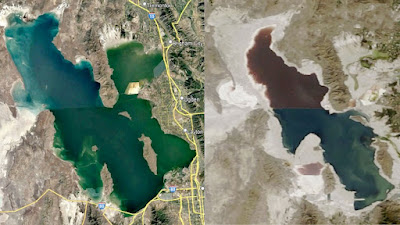NOTE: due to accidental deletions on this platform I have lost some of the original attributions for this post.
Here is a map of the paleo-lakes of the Great Basin from the Pleistocene Era.
The present day lakes are shown in lighter blue though even those have shrunk from the outlines shown above. These water bodies are endorheic, meaning their water is retained-they do not drain to any external bodies of water. Among the many large lakes is Lake Bonneville, whose remnants include the Great Salt Lake and Utah Lake. Bonneville had many levels or shorelines formed during periods of rising and falling water levels.
About 18,000 years ago Lake Bonneville reached its highest elevation and began to overflow into the Snake River basin in southern Idaho. The overflow became a massive catastrophic flood that drained a huge amount of the lake's water away, possibly in less than a year. Post-flood the lake receded to the Provo level, shown in light blue on the above map or the dark blue area on this (probably colored from the original) US Geological Survey map from 1890.
This image, via Wikipedia, shows what some of the different past shorelines look like on an aerial view.
Recently as the climate has warmed these lakes, like many others in desert climates have shrunk quite a bit. Although a typical map of Utah shows this outline for the Great Salt Lake,
the real water level is now what is shown on the right below. Utah just had an unusually snowy winter so the levels have probably risen, but the long term trend of shrinking is likely to continue.






















